
Fast, affordable Internet access for all.

First Electric Cooperative – and its broadband subsidiary Connect2First – are making major inroads on their quest to deliver affordable fiber Internet service to long-neglected portions of Arkansas.
Buoyed by an historic stretch of federal funding, the cooperative says it’s on target to deliver up to 2.5 gigabit per second service to 72,000 locations by the end of 2024.
Connect2First officials say they’ve deployed 4,371 miles of fiber across 18 counties in the southeastern part of the state, just outside of the state capital in Little Rock, delivering speeds significantly higher than seen in more urban, populous areas. The resulting service is also a notable step up in speed from regional monopolies like AT&T and Optimum, which see little market incentive to upgrade lagging networks or compete on price.
Connect2First residential customers have the choice of three tiers of service: a symmetrical 200 megabit per second (Mbps) connection for $60 a month; a symmetrical 700 Mbps connection for $60 a month; or a symmetrical gigabit per second (Gbps) service tier for $100 a month. The company’s tiers feature no service caps, hidden fees, or long term contracts.

First Electric Cooperative, headquartered in Jacksonville, Arkansas, began in 1938 with just 3 employees and 150 members. Now with 94,000 electricity customers, it’s one of the largest cooperatives in the country, and the second biggest cooperative in the state of Arkansas.
CVFiber continues to make progress in deploying affordable fiber to long-neglected rural areas in Vermont, as the state’s effort to embrace CUDs (Communications Union Districts) as a cornerstone of bridging the digital divide also pays dividends.
In late 2022 CVFiber broke ground on an ambitious plan to build a 1,200-mile fiber-optic network to bring affordable gigabit broadband access to 6,000 rural Vermont addresses deemed underserved by commercial broadband providers.
According to an October announcement by the CUD, its first customers have been connected in the central Vermont town of Calais, with construction ongoing in nearby Middlesex, East Montpelier, and Worcester.
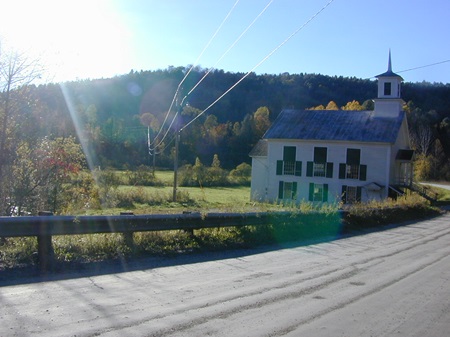
“We are enthusiastic about our progress as we bring high-speed Internet to central Vermont communities,” CVFiber Executive Director Jennille Smith said. “The progress that we have made and the impact that we’ve been able to achieve to date could not have been accomplished without the unwavering commitment from our partners. We are optimistic as we expand to other service areas.”
CUDs have proven to be a useful way for municipalities to band together to cooperatively build broadband projects that may have been financially and logistically impossible to try alone. Vermont CUDs can legally fund needed broadband expansions through debt, grants, and donations—but not taxes, though they themselves are tax-exempt nonprofits.
CVFiber’s fiber deployment is expected to cost $60 million, $27 million of which is being paid for by federal grants made possible by the American Rescue Plan Act (ARPA). The remaining cost is expected to be funded by network revenue, loans, and future grant opportunities.
A new chapter in state-Tribal relations is being written as the importance of robust and reliable telecommunication becomes all-too-apparent, especially in the face of more frequent extreme weather events. For the first time, a Tribe in California is building high-speed Internet infrastructure in collaboration with the state, thanks to the resilience of the Hoopa Valley people.
Tucked along the Trinity River in the northwestern corner of the state, the Hoopa Valley Reservation is located in a rural and heavily wooded region that spans over 89,000 acres, home to over 2,500 Tribal citizens. Last summer, the area was ravaged by closely-timed wildfires and thunderstorms, followed by massive landslides that collapsed into the region’s riverways, including the Trinity River, a sacred body of water for the Hoopa Tribe.
As the river turned to mud and dead fish began to wash up on its banks, alarmed residents had limited means of connecting with one another, getting timely information about what was going on, or contacting emergency services. That was because of a hidden casualty of the wild weather: the Tribe’s wireless Internet network, which sustained severe damage that not only hindered communication but also extended the time it took to assess the damage.
Butler Electric Cooperative and its Velocity broadband subsidiary say they’re making meaningful progress in bringing fixed wireless access (FWA) — and ultimately fiber optic broadband — to long-neglected sections of rural south-central Kansas. It’s the latest example of electrical cooperatives playing a leading role in the longstanding quest to bridge the digital divide.
Butler Electric Cooperative, which provides electrical service to 7,000 meters via 1,850 miles of transmission and distribution lines, created Velocity in 2018 as part of the cooperative’s expansion into broadband access.
The service currently provides fixed wireless access to roughly 5,500 rural Kansas residents, long left out of reach of traditional cable, fiber, or DSL due to the logistical challenges and high cost of rural deployment.
The company’s current service tiers range from a 15 megabit per second (Mbps) downstream and 3 Mbps upstream tier for $60 a month, to a 100 Mbps downstream, 10 Mbps upstream tier for $84 a month. Both tiers feature a one-time installation fee of $200. The higher pricing generally reflects the higher prices of deployment to remote, rural areas.
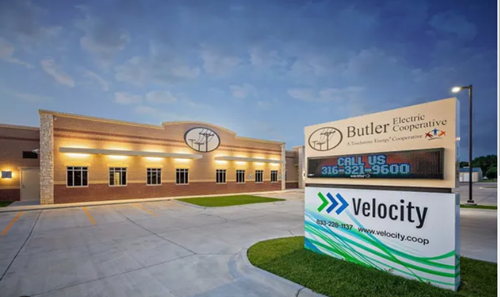
Velocity CEO Kevin Brownless tells Telecompetitor that the company tries to keep consumer-facing pricing as close to cost as possible, and that Velocity and Butler plan to drive fiber into these markets over the coming years thanks to federal subsidies.
Vermont’s nascent Communication Union Districts (CUD) are pioneering creative efforts to deploy affordable broadband to the rural parts of the Green Mountain State. That includes the Lamoille FiberNet CUD, which has greenlit a major new plan to expand affordable access to fiber in the most neglected parts of rural Vermont.
At an Aug. 14th meeting, the Vermont Community Broadband Board (VCBB) approved Lamoille FiberNet’s $1.3 million pre-construction grant, followed by a mid-September approval of the CUD’s $13.6 million construction grant.
“This grant means that, by the end of 2024, we can bring high-speed internet to almost all the homes and businesses in our CUD that are unserved or underserved,” Lamoille FiberNet Communications CUD Chair Jeff Tilton said in a statement.
With the Lamoille CUD covering 10 towns in the north central part of the state (Belvidere, Cambridge, Eden, Elmore, Hyde Park, Johnson, Morristown, Stowe, Waterville and Wolcott), Lamoille plans to have Fidium Fiber and Consolidated Communications deploy and manage 630 miles of new fiber connecting more than 4,800 unserved and underserved Lamoille County homes and businesses. The network will be deployed in two phases.
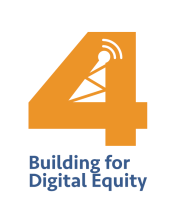
Ebony Cooksie is the Market Development Manager and Government Affairs Coordinator for NextLink Internet and we talked at Net Inclusion about how she transitioned from working in education to digital equity. With so many people new to this field, transitioning often from health and medical fields, we thought it would be helpful to talk about the transition.
This show is 13 minutes long and can be played on this page or using the podcast app of your choice with this feed.
Transcript below.
We want your feedback and suggestions for the show-please e-mail us or leave a comment below.
Listen to other episodes here or see other podcasts from the Institute for Local Self-Reliance here.
Thanks to Joseph McDade for the music. The song is On the Verge and is used per his Free-Use terms.
The establishment of a new broadband office in Mississippi heralds a new era in the state’s efforts to bring high quality broadband to all its residents, especially those living in the most rural parts of the state.
On the forefront of that effort is the Delta Electric Power Association, an electric cooperative currently building out fiber infrastructure in the Mississippi Delta region – a mostly rural part of the state with a majority Black population and where about a quarter of residents do not have access to broadband of any kind.
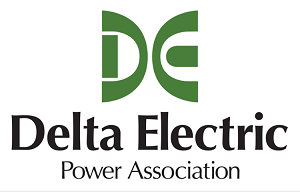
As in other states with sizable rural areas, electric cooperatives are playing a major role in building out high-speed Internet infrastructure.
In Mississippi, Delta Electric, has a service area that covers ten counties in the northwestern part of the state, providing electricity for 4,235 industrial, 3,144 commercial, and 21,174 residential member-owners.
Now, the cooperative has set its sights set on bringing high-speed Internet service to its members, left behind by the big national providers who do not consider the region profitable enough to invest in.
Electric Cooperative Starts With CARE(S)
It started in 2020, when the electric cooperative was awarded a $4.9 million Coronavirus Aid, Relief, and Economic Security (CARES) Act grant for a fiber pilot serving Carroll County with gig speed connections.

We're more than 15 years and a hundred billion dollars into the alphabet soup of federal broadband infrastructure subsidy programs, and millions upon millions of households are stuck on deteriorating connections and capacity-constrained technologies. This week on the podcast, Christopher is joined by Jonathan Chambers, partner at Conexon, to talk about how the BEAD program is our last chance. And to make sure we get it right, we have to grapple with the array of long-standing failures - purposeful and not - that have gotten us to this point: the regulatory capture of the FCC, the willful ignorance of bad data collection and mapping, the acceptance of disingenuous "technology neutral" arguments, turning a blind eye to the imbalance in service and cost between our cities and rural expanses, and pretending that not every households in the country can have a first-class, affordable, reliable Internet connection.
This show is 40 minutes long and can be played on this page or via Apple Podcasts or the tool of your choice using this feed.
Transcript below.
We want your feedback and suggestions for the show-please e-mail us or leave a comment below.
Listen to other episodes here or view all episodes in our index. See other podcasts from the Institute for Local Self-Reliance here.
Thanks to Arne Huseby for the music. The song is Warm Duck Shuffle and is licensed under a Creative Commons Attribution (3.0) license.
Public Utility Districts across the state of Washington have become key players in building out high-speed Internet infrastructure for residents and businesses in rural parts of the Evergreen State. One of those PUD’s, the Whatcom County Public Utility District (PUD) is now leading that charge in one of the most difficult-to-reach parts of the state, building an open access dark fiber network that will bring high-speed connectivity to over a thousand homes and businesses in Point Roberts.
Point Roberts is a pen-exclave of Washington State, about 25 miles south of Vancouver. (Pen-exclave: an area that can only be accessed through another country – in this case, Canada). The rural community, known for its peaceful beaches and mountain views, as well as its orca and eagle populations, is just under 5 square miles and home to about 1,200 residents.
Designated to the United States in 1846 as the border between the United States and Canada was drawn along the 49th parallel, Point Roberts has a distinct geographic identity, which presents a unique challenge when it comes to building broadband infrastructure.
Panhandle Telephone Cooperative Inc. (PTCI) has announced the broadband provider will be dramatically expanding access to its fiber broadband services in New Mexico thanks to a new $43.4 million grant made possible by federal infrastructure legislation.
The Cooperative currently predominately offers fiber broadband, phone, and cellular wireless phone service to subscribers in Oklahoma and Texas. The $43 million cash infusion will allow the cooperative to expand access outside of its existing footprint into rural Union County, in northeast New Mexico.
As per grant rules, the network will deliver speeds of 100 Megabit per second (Mbps) downstream and 20 Mbps upstream, but the cooperative does not yet have a construction timeline or information on planned tiers and pricing.
PTCI’s existing deployments in Texas provide locals with uncapped fiber access at symmetrical speeds of 100 Mbps, 250 Mbps, and 1 Gbps for $60, $86, and $116 per month, respectively. The company stopped offering TV services in 2020, but launched its own cellular network in its existing territories starting in 2021.
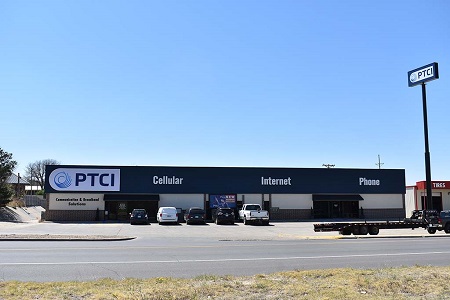
The project’s $43 million grant for expansion into New Mexico was made possible courtesy of a recently announced fourth funding round for the U.S Department of Agriculture’s ReConnect Program. Last month the program announced another $714 million in grants and loans aimed at shoring up broadband access to long unserved or underserved rural Americans.